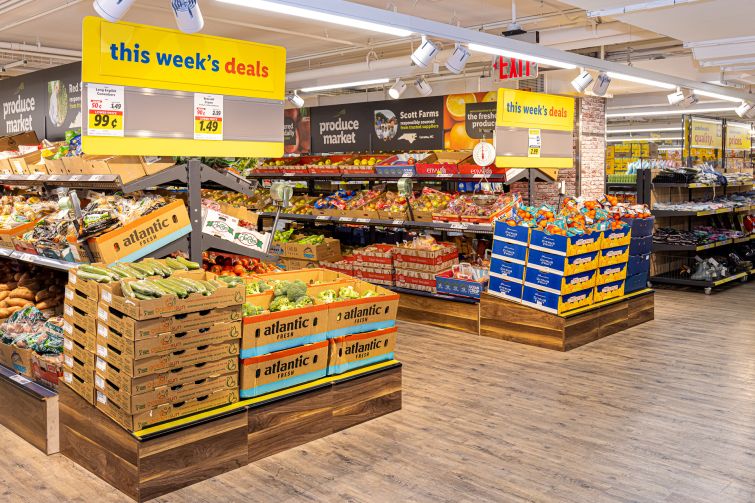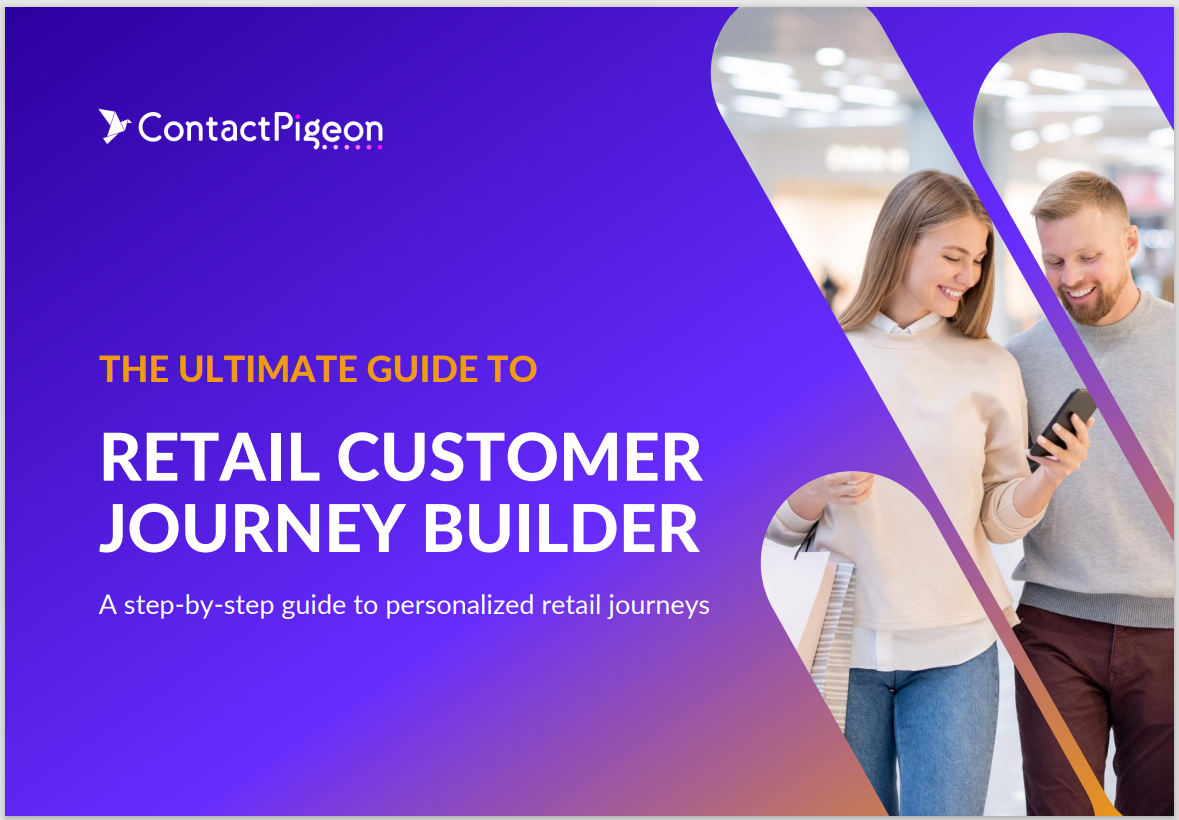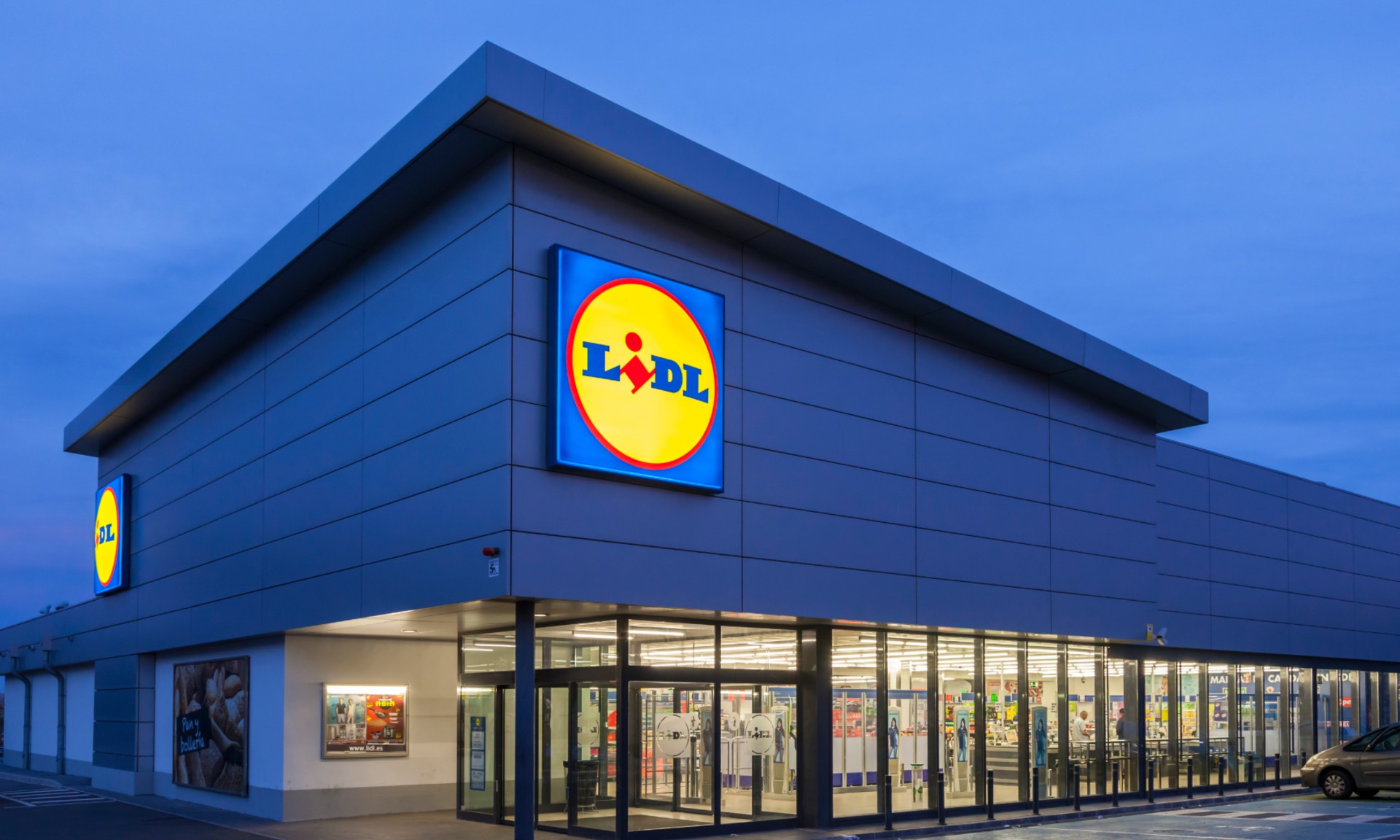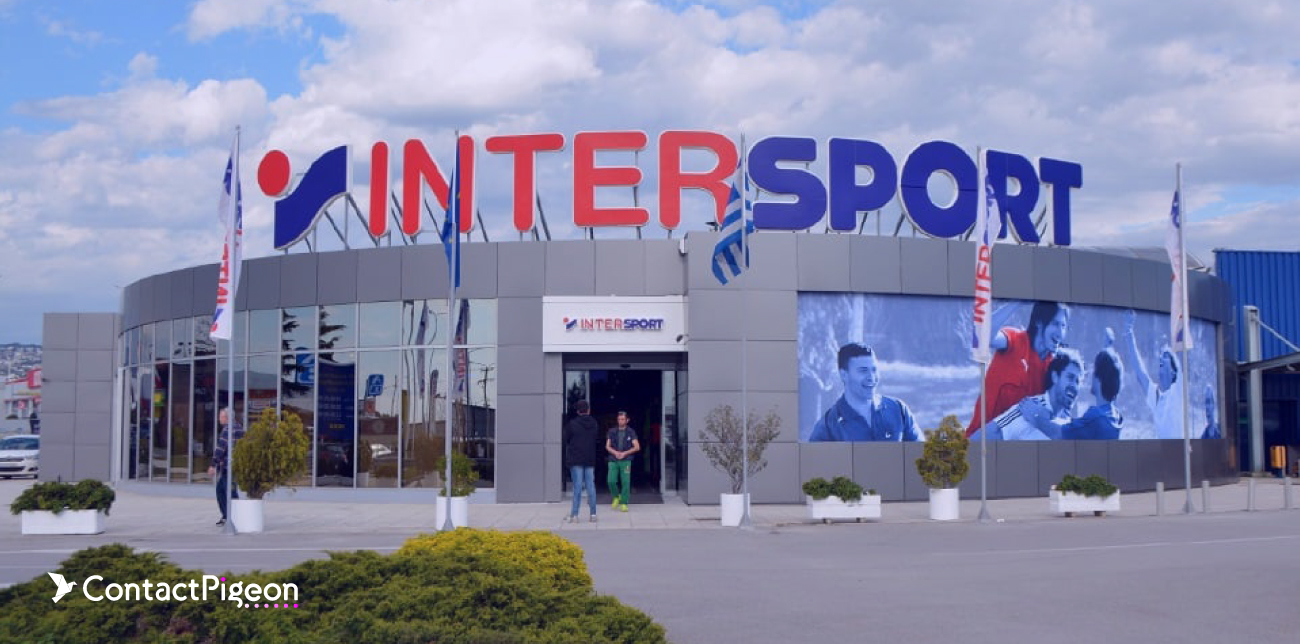The fierce competition in the FMCG world has brought forward many big brands that have achieved global awareness and continuous growth. One of the biggest names that have shown immense success for almost 100 years, with approximately 12,000 locations in 30 countries, is, of course, none other than Lidl. The household name has impacted the FMCG retail industry, and Lidl’s marketing strategy has skyrocketed the brand to unyielding success in Europe and in the United States.
This article focuses on the key factors that made Lidl a leader in discount retailing, delving deep into exploring the brand’s journey through time. The aim is to present you with actionable insights and valuable takeaways that you can apply in your business ventures and scale effectively.
Short on time? No worries, here’s an audio version of our Lidl article.
Exploring the origins and evolution of Lidl
Lidl’s origin story is a true example of innovation and determination, from its humble beginnings to its current worldwide status. The global powerhouse has left a significant mark on the FMCG retail scene with many important milestones and achievements. So, let’s take a trip through the long history of Lidl and discover how the famous brand made it to the top.
Early days
It all started in 1932 when Josef Schwarz partnered up with Südfrüchte Großhandlung Lidl & Co. and altered the product range of the brand. Developing the company from just a fruit wholesaler to a food wholesaler, in general, was the first step in the momentum of Lidl’s expanding strategy. The big breakthrough came years later, when Josef’s son, Dieter, took over and turned to discount and cash and carry markets. Under his leadership, and after a few name changes, the brand started changing into what we know today, and its complete transformation began. In 1973 he opened the first official Lidl store in Ludwigshafen, Germany, following the Aldi model. Dieter took out-of-commission products that did not bring sales from the Lidl shelves and reduced costs. With this strategy, he operated 33 stores in different locations by 1977. Currently, Germany has 3.243 active Lidl supermarkets.
Expansion and development
Approximately 20 years later, from 1989 to 1998, Lidl opened its first supermarkets in the UK, Austria, Greece, Belgium, France, Italy, Netherlands, Portugal, and Spain. The steady expansion continued throughout the years, when in 2017, Lidl entered the US market, now operating 177 stores. The future seems bright for the German brand, with many more planned locations, like Bosnia and Herzegovina, Ukraine, North Macedonia, and Montenegro.
Awards and accomplishments
Over the years, besides company awards, Lidl has been collecting a lot of distinctions for its products, like its beer, wine, and food. These accolades are a testament to the brand’s innovative retail strategy, as well as its quality and discount offerings. Of course, Lidl’s marketing strategy and positioning have played a crucial role in this success and its enduring impact. Following, you can check out the most recent and impressive ones.
- #3 Best Grocer and #5 Best Grocer in the USA Today Readers’ Choice Awards (2021, 2022)
- Retail Sustainability Award in Produce Business (2021)
- #1 Fasted Growing Retailer in Kantar (2019, 2020)
- Retailer of the Year in Beverage Dynamics (2018)
- Top 3 Supermarket of the Year in Food & Wine (2018)
- Grocer of the Year in the Spartanburg Herald-Journal (2018)
- Most Innovative Brand of the Year – Preferred Selection in Store Brands ‘Best of Awards’ (2017)
- #1 Grocer in the Greenville Daily Reflector: Best of 2018 (2018)
- Shipper of the Year for the Port of Virginia (2017)
- Group Volunteer Partner Award in Second Harvest (2017)
- Los Angeles International Dairy Competition: 7 product wins (2017) / 17 product wins (2018)
- Private Label Manufacturers Association, Salute to Excellence Awards: 3 product awards (2018) (2021)
- NY International Beer Competition: Lidl won “Beer Supermarket of the Year” (2018) and received 11 medals for its beers (2021)
- USA Beer Ratings gave medals to 10 beers (2021)
- San Francisco Wine Chronicle awards were given to 72 wines in 2020 and 65 wines in 2018
- LA International Wine Competition gave distinctions to 23 wines in 2018 and 101 wines in 2017
- FoodBev Media’s World Plant-Based Taste Test Awards given to 5 Lidl products (2021)
The components of the Lidl marketing strategy
Delivering exceptional customer service and quality products at low affordable prices has been the center of the Lidl marketing strategy for decades. But success has many different aspects, and they all are equally important. This section is about all these components that Lidl brought together and highlights the need for a holistic approach that leaves nothing to chance.
Pricing strategy, product diversification, and target audience
Lidl has been one of the most renowned discount supermarkets globally and with good reason. Offering a wide variety of products, like fruit, vegetables, fish, bakery, health and beauty products, and pet food, all of which derive from local sources. For instance, 70% of its products in the UK come from British suppliers and farmers. Additionally, Lidl included in its product strategy the addition of foods from different cultures, like France, Poland, and Italy.
The discount philosophy extends throughout the entire Lidl strategy, focusing on penetration pricing. This tactic refers to the low prices that bring more sales. So, according to this, the FMCG giant attracts audiences that seek affordable prices and easy solutions for their household products but are not entirely loyal to a specific brand. To battle that obstacle, Lidl ensures that it includes many limited-time offers, promotions, and discounts in its overall approach to retain them.
CSR, charitable giving, and sustainability

The Lidl marketing strategy is surrounded by its sustainable practices and dedication to social responsibility. The “Lidl for a Better Tomorrow” drives the brand’s approach toward its customers, employees, and suppliers. It also includes environmental and economic parameters respecting biodiversity, contributing to climate protection, and minimizing resources.
As an international FMCG retail company, Lidl chose to lead by example, keeping high-quality standards while maintaining its discount products. Featuring certification seals from esteemed organizations, customers and suppliers become aware of Lidl’s commitment to sustainability. These organizations focus on fair trade, organic farming, harvesting, and overfishing. Below is the list of certifications that Lidl features in its products.
- USDA Organic – products that are grown based on soil quality, animal breeding practices, pest, and weed control, and lack of additives.
- Non-GMO project – this certificate is for products that are not genetically modified
- Rainforest Alliance – this seal shows that a farm or a forest that has supplied the Lidl products meets environmental criteria to protect biodiversity, soil, water, and wildlife.
- Fairtrade International and Fair Trade USA – these two companies ensure fair trade standards for sale working conditions and ethical practices throughout the supply chain
- True Source Certified Honey – practices based on US and International trade laws for the tracking and tracing of honey all the way to the beekeeper.
- Certified Humane – this seal refers to the humane conditions that animals for food are treated
Additionally, Lidl has procured certifications for its seafood products from establishments like the Marine Stewardship Council, Best Aquaculture Practices, Aquaculture Stewardship Council, and the GGN. Lastly, supporting local communities is a crucial part of the Lidl strategy, so they have a dedicated program for donations and sponsorships. The brand is already partnering with Children’s Miracle Network Hospitals, and together they have launched a private label called Peak Harvest.
Promotional strategy

Lidl is known for its capacity for promotional and marketing campaigns, and while most competitors cut down their budgets, Lidl keeps increasing it. To connect and interact with its audience, Lidl uses different online and offline channels, putting social media at the top of its priority. Its funny and entertaining content on Facebook and Twitter makes it easy for its followers to respond, giving them the freedom to voice their opinions. What is more, Lidl’s multiplatform campaigns also extend to billboards, TV ads, and prints. The FMCG retailer stays on top of the ever-changing consumer trends, thus focusing its advertising efforts on highlighting its special offers and discounts.
Digital transformation
Every successful brand needs a solid digital presence, and Lidl is no exception to this rule. The company has recognized the needs of its tech-savvy customers, thus implementing a strategic move towards the modernization of its digital assets. As such, Lidl has launched a user-friendly and detailed website, following an equally responsive app. Moreover, by leveraging the power of data analytics and customer insights, Lidl offers personalized, targeted engagements to its audience.
The Lidl marketing strategy and its transformation to omnichannel
Utilizing an omnichannel customer engagement strategy is the key to creating seamless customer journeys. The main goal is to allow consumers to enjoy a frictionless shopping experience across different points of contact and disparate sources. To be consistent and up-to-date with the latest retail and eCommerce best practices, Lidl has fused these elements to its tactics through the years, effectively adapting to the latest technological trends.
#1: Leveraging an omnichannel strategy for maximum customer engagement with Lidl Plus

Lidl’s loyalty program reaches the company’s customers via different touchpoints, connecting the brick-and-mortar stores with its digital presence. This approach enables the big FMCG retailer to gather important information about its audience and target them with personalized, exclusive offerings, discounts, and promotions.

Build smarter customer journeys and activate AI-driven personalization for repeat purchases.
Analyzing Lidls’s eCommerce website
Lidl is undoubtedly one of the top and most highly evaluated retail brands. We’ve analyzed four-page templates of their site to identify eCommerce best practices and mistakes you should avoid.
A. Analyzing Lidl’s homepage
What we liked

- Bright colors and well-made visuals. Lidl’s homepage is as eye-catchy as it gets. The appearance of the homepage makes it easy for everyone to view the latest offers and deals
- The search bar on the header allows consumers to find what they are looking for on the spot
- Prominent pop-up to join the myLidl program and get more leads
- Store locator to inform the customers
- Rewards and coupons section
- Same-day home delivery banner
- Intriguing CTA to join the loyalty program and download the app
What we didn’t
- Unfortunately, if you don’t create an account, you cannot add products to your cart or make a purchase
- No sticky header and no drop-down menu, two very important elements for optimal UX and shopping experience
- The same-day delivery banner could be placed in a better spot
- Home delivery is restricted to selected stores, instead of the general subscriber base
B. Analyzing Lidl’s category page

What we liked
- Clear division of the products into their respective categories, making it even more user-friendly
- Minimal design so that the visitor will not get lost and confused
- Preview of selected products from each category, giving visitors a glimpse of the offerings
What we didn’t
- No filters or subcategories that would permit followers to navigate through the page easier
C. Analyzing Lidl’s product page

What we liked
- Minimal design
- Details about the product, including nutrition facts and awards won
What we didn’t
- No customer reviews section
- No availability information
- No shopping cart functionality
D. Analyzing Lidl’s checkout process

Surprisingly enough, the Lidl website does not have a checkout process. Instead, the loyal members of the myLidl club can create their shopping list and use it when they visit the store. They can also collect rewards and coupons through the app or the website, and redeem them at the physical location.
Interesting statistics about Lidl
- Lidl increased its sales by 4.7% during the financial year 2021-2022 and opened 300 new stores in the same time period. (Retail Detail)
- In 2022, Lidl reached the €100 billion mark in sales. (Retail Detail)
- In the UK, Lidl sales increased by 23.9% by December 2022. (Statista)
- By 2021, Lidl had reached a sales income of more than 7.7 billion GBP on the UK market. (Statista)
- Lidl is the favorite FMCG brand of the German population, surpassing Aldi. (Ailon)
- In Greece, the annual turnover of Lidl is estimated at €1.3 billion, with a 10% market share. (Eurofound)
- Lidl has 224,726 employees in total. (Wikipedia)
Lidl’s latest news
- Lidl in another dig at M&S after Percy Pig ice cream row. (Independent.co.uk)
- Armed Lidl shoplifting suspect stopped by public, police say. (BBC)
- Leeds: Lidl unveils plans for distribution center. (BBC)
- Lidl wins logo lawsuit against Tesco. (BBC)
- Lidl supermarket chain announces 200 new NI jobs. (BBC)
Discover more resources about FMCG retailers
- ALDI’s marketing strategy: The key growth ingredients of the FMCG titan
- Sainsbury’s Marketing Strategy: Becoming the Second-Largest Supermarket Chain in the UK
- Tesco Case Study: How an Online Grocery Goliath Was Born
- The Marks and Spencer eCommerce Case Study: 3 Growth Lessons for Retailers
- The Ocado marketing strategy: How it reached the UK TOP50 retailers list
- Walmart Marketing Strategy: Decoding the Success of the US Multinational Retailer
- Analyzing Lidl’s Marketing Strategy: How the Discount Supermarket Leader Scaled
- ASDA’s marketing strategy: How the British supermarket chain reached the top
- FMCG Marketing Strategies to Increase YOY Revenue
The lessons learned from the Lidl marketing strategy
Through the years, the huge retail brand, Lidl, has accommodated a lot of low-income shoppers with its fresh products, and its detailed product curation. The brand has carved a bright mark on the world of FMCG and has managed to stay relevant and competitive through the years. The only thing missing from this retail giant is a mandatory focus on the omnichannel customer engagement approach with some changes on its website, like adding an online purchase. This would skyrocket the brand and contribute to its growth even more.
ContactPigeon is dedicated to educating both consumers and retailers about the benefits of eCommerce and omnichannel customer engagement, and would surely be an important ally to the brand. To learn more about how you can transform your business, feel free to book a free 30-min consultation and conduct deep market research before investing in a robust omnichannel customer engagement platform.

Let’s Help You Scale Up
Spending time on Linkedin? Follow us and get notified of our thought-leadership content:



![Benchmarking Growth Strategies of Top Fashion Retailers [Study]](https://blog.contactpigeon.com/wp-content/uploads/2025/11/top-fashion-retailers.jpg)
